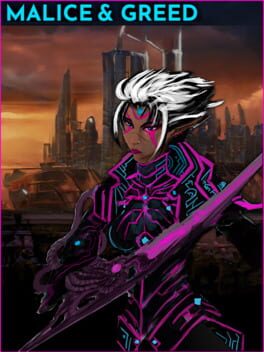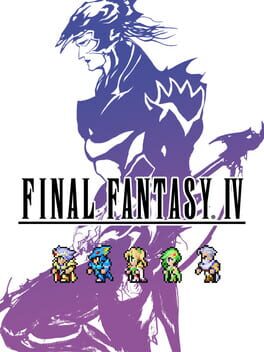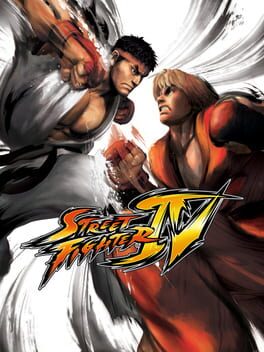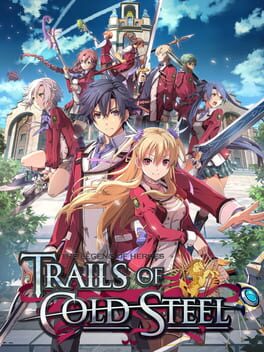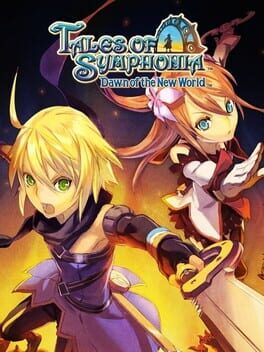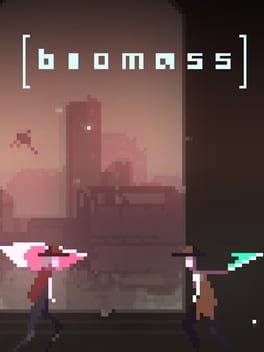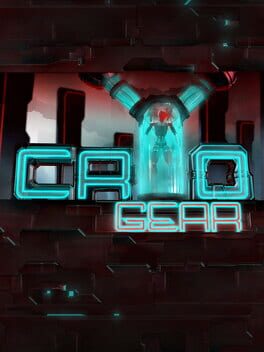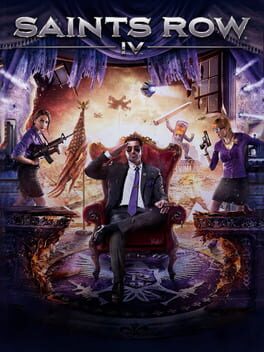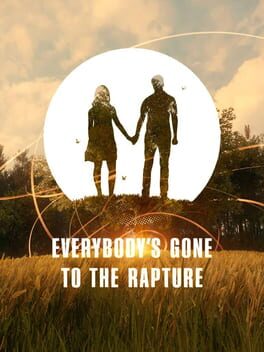Shenobi
This is a tough one to write about.
Short answer: It's probably a really good game at its core and if you like puzzle-centric Metroidvanias that encourage exploring, this is probably your cup of tea.
Longer answer: For me at least, it's too puzzle-centric. There's an amazing amount of exploration to be done with secrets hidden in practically every room you enter (and if they're not hidden, it's because you stumbled into a secret room and the chests are there, waiting for you if you can solve a puzzle to reach them).
Fast travel is a little unintuitive at times because some campfires you travel from don't reach areas you think they would when heading back from them. That being said, the caves you explore are labyrinthine in nature and it kinda fits the mold of the game, so it's hard to gripe about that.
The soundtrack is solid. Not much else to say about that because it's an enjoyable listen, but nothing I'm adding to my music collection.
Enemy diversity is a mixed bag, in that there are some interesting enemy choices that have distinct behaviors, but some enemies really are just basic palette swaps with nothing else going for them beyond dealing more damage/taking more damage before dying.
Bosses are a great time, though for all the traveling I did in the game, they feel few and far between. That may just be a perception issue on my part because of getting lost a few times and having to backtrack a bit to figure out where to go next, but I figure it's worth noting.
Bosses (outside of maybe the first) require patience and paying attention to the layout of the room and whatever resources might be there to maximize your chances for survival. Although a barbarian's instinct might be to Hulk-Smash! your way through them, the player better bring a heaping of awareness to the match because you don't get any kinds of items to heal or boost stats or anything of the sort when going into these fights -- it's adapting to the situation or getting wrecked.
I think I enjoyed every boss fight I encountered outside of maybe the boss of the Eternal Palace area, which just felt like a chore to deal with, despite probably being the easiest boss to figure out.
I should give a brief mention to combat in general -- it's extremely basic and consists of you slashy-slashing and occasionally using your bat to manipulate resources around you to deal with enemies. Sometimes you might throw a stone to hit an enemy and elicit a particular behavior from them (be it knocking them off a ceiling or a ledge), but it's mostly just about slashing (or charge-slashing) while not being in the way of whatever the enemy might have in store for you.
I want to mention the map system because I said earlier that the place is very labyrinthine and it is, but it's also worth noting that the map system comes with a variety of markers to allow you to make notes-of-sorts for each room in case you need/want to come back there to deal with something specific. Wish you could have an easier way to pick the icon you want instead of just scrolling through all of them, but I appreciate the sheer number of options available.
Some puzzles are mandatory and I think at least for me, I'm just not that fond of the puzzle mechanics for this game. You (barbarian) send your bat (Pip) out to light up certain stones that can cause effects (temporarily or permanently based on each room) that allow you to traverse said rooms. You use the right-analog stick to aim a fruit that sends the bat in that direction. You can also throw stones this way (of which you have limited supplies) or special fruits (of which you also have limited supplies) to either hit switches from a distance or use your bat to do some specific tactics to help make puzzle progression a thing.
The puzzles are oftentimes clever, but sometimes just frustrating because they rely on the player's ability to hit angles properly with a limited supply of items. As an example, there's a very simple puzzle in a secret room that involves a ball and chain swinging back and forth over a pit of spikes. The chest is on the other side of the room behind a locked portcullis. The switch is on a ledge up and to the right of where the ball swings back and forth in a pendulum fashion.
What do you do? Simple, you try and angle and time your stone throw so that it bounces off the ball/chain on the way back to the right, causing it to ricochet onto the ledge with the switch to hit it. I understood exactly what it wanted after the first throw, but with 25 stones in my inventory, I couldn't manage it and had to just abandon the chest to come back later if I wanted to (I didn't). There were no nearby resources to recover my stones, so I couldn't go back and try again quickly. Not all puzzles are like this, but enough are that it can get frustrating (at least for me).
It got to the point where I wasn't really having fun slogging through some puzzles and it kinda took me out of the game. At one point, I found this puzzle that was simply moving around the perimeter of a room quickly while getting a monster inside a maze in the middle of the room to follow you through said maze. There are hazards in the maze that will kill the creature and you need to get it to a certain place in the maze in order to solve the puzzle, but between teleporters in the maze that would fling the creature back the way it came because it sat in a spot for too long and the hazards, I gave up despite knowing what to do after having it die on me about a dozen times or so.
I mention this because it was in the last area I got to before I quit and when I went back to explore the rest of the area, I found my way to a room that had notes that said that the puzzle I gave up on was one of three trials I had to overcome to make progress. Yeah, that was it for me. I wasn't dying to ruthlessly hard platforming (there is some hard platforming in the game), I wasn't missing vital resources when I needed them for an area -- I just couldn't get a stupid creature to follow me through a maze where it was crystal clear where it should go, but I simply couldn't get it to behave the way I needed it to in order to get it there. When progress is beyond my control and in the hands of enemy AI behaving properly, I'm kinda over it.
I'd encourage anyone who wants to play a Metroidvania with deep exploration to it and doesn't mind sometimes-frustrating puzzles to give it a shot. The game has a lot of good things going for it and if you can get past bashing your head against the brick wall that is handling those puzzles, you might have a grand time with this game.
Short answer: It's probably a really good game at its core and if you like puzzle-centric Metroidvanias that encourage exploring, this is probably your cup of tea.
Longer answer: For me at least, it's too puzzle-centric. There's an amazing amount of exploration to be done with secrets hidden in practically every room you enter (and if they're not hidden, it's because you stumbled into a secret room and the chests are there, waiting for you if you can solve a puzzle to reach them).
Fast travel is a little unintuitive at times because some campfires you travel from don't reach areas you think they would when heading back from them. That being said, the caves you explore are labyrinthine in nature and it kinda fits the mold of the game, so it's hard to gripe about that.
The soundtrack is solid. Not much else to say about that because it's an enjoyable listen, but nothing I'm adding to my music collection.
Enemy diversity is a mixed bag, in that there are some interesting enemy choices that have distinct behaviors, but some enemies really are just basic palette swaps with nothing else going for them beyond dealing more damage/taking more damage before dying.
Bosses are a great time, though for all the traveling I did in the game, they feel few and far between. That may just be a perception issue on my part because of getting lost a few times and having to backtrack a bit to figure out where to go next, but I figure it's worth noting.
Bosses (outside of maybe the first) require patience and paying attention to the layout of the room and whatever resources might be there to maximize your chances for survival. Although a barbarian's instinct might be to Hulk-Smash! your way through them, the player better bring a heaping of awareness to the match because you don't get any kinds of items to heal or boost stats or anything of the sort when going into these fights -- it's adapting to the situation or getting wrecked.
I think I enjoyed every boss fight I encountered outside of maybe the boss of the Eternal Palace area, which just felt like a chore to deal with, despite probably being the easiest boss to figure out.
I should give a brief mention to combat in general -- it's extremely basic and consists of you slashy-slashing and occasionally using your bat to manipulate resources around you to deal with enemies. Sometimes you might throw a stone to hit an enemy and elicit a particular behavior from them (be it knocking them off a ceiling or a ledge), but it's mostly just about slashing (or charge-slashing) while not being in the way of whatever the enemy might have in store for you.
I want to mention the map system because I said earlier that the place is very labyrinthine and it is, but it's also worth noting that the map system comes with a variety of markers to allow you to make notes-of-sorts for each room in case you need/want to come back there to deal with something specific. Wish you could have an easier way to pick the icon you want instead of just scrolling through all of them, but I appreciate the sheer number of options available.
Some puzzles are mandatory and I think at least for me, I'm just not that fond of the puzzle mechanics for this game. You (barbarian) send your bat (Pip) out to light up certain stones that can cause effects (temporarily or permanently based on each room) that allow you to traverse said rooms. You use the right-analog stick to aim a fruit that sends the bat in that direction. You can also throw stones this way (of which you have limited supplies) or special fruits (of which you also have limited supplies) to either hit switches from a distance or use your bat to do some specific tactics to help make puzzle progression a thing.
The puzzles are oftentimes clever, but sometimes just frustrating because they rely on the player's ability to hit angles properly with a limited supply of items. As an example, there's a very simple puzzle in a secret room that involves a ball and chain swinging back and forth over a pit of spikes. The chest is on the other side of the room behind a locked portcullis. The switch is on a ledge up and to the right of where the ball swings back and forth in a pendulum fashion.
What do you do? Simple, you try and angle and time your stone throw so that it bounces off the ball/chain on the way back to the right, causing it to ricochet onto the ledge with the switch to hit it. I understood exactly what it wanted after the first throw, but with 25 stones in my inventory, I couldn't manage it and had to just abandon the chest to come back later if I wanted to (I didn't). There were no nearby resources to recover my stones, so I couldn't go back and try again quickly. Not all puzzles are like this, but enough are that it can get frustrating (at least for me).
It got to the point where I wasn't really having fun slogging through some puzzles and it kinda took me out of the game. At one point, I found this puzzle that was simply moving around the perimeter of a room quickly while getting a monster inside a maze in the middle of the room to follow you through said maze. There are hazards in the maze that will kill the creature and you need to get it to a certain place in the maze in order to solve the puzzle, but between teleporters in the maze that would fling the creature back the way it came because it sat in a spot for too long and the hazards, I gave up despite knowing what to do after having it die on me about a dozen times or so.
I mention this because it was in the last area I got to before I quit and when I went back to explore the rest of the area, I found my way to a room that had notes that said that the puzzle I gave up on was one of three trials I had to overcome to make progress. Yeah, that was it for me. I wasn't dying to ruthlessly hard platforming (there is some hard platforming in the game), I wasn't missing vital resources when I needed them for an area -- I just couldn't get a stupid creature to follow me through a maze where it was crystal clear where it should go, but I simply couldn't get it to behave the way I needed it to in order to get it there. When progress is beyond my control and in the hands of enemy AI behaving properly, I'm kinda over it.
I'd encourage anyone who wants to play a Metroidvania with deep exploration to it and doesn't mind sometimes-frustrating puzzles to give it a shot. The game has a lot of good things going for it and if you can get past bashing your head against the brick wall that is handling those puzzles, you might have a grand time with this game.
2021
Interesting/fun take on roguelike deckbuilders, with deckbuilding actually being relegated to skills that you start with and can acquire through party member acquisition (defeat your enemies to gain them) or sacrificing said members (for items, skills, or other benefits).
I've only played a few hours with it so far and although it's not perfect, it's also still in Early Access and the dev team is dropping updates on it all the time.
If nothing else, the soundtrack jams hard. Will potentially revise rating and review later based on more time spent with the game.
I've only played a few hours with it so far and although it's not perfect, it's also still in Early Access and the dev team is dropping updates on it all the time.
If nothing else, the soundtrack jams hard. Will potentially revise rating and review later based on more time spent with the game.
2005
2017
2021
My favorite game, but probably the worst version I've played. It's not bad by any means, but despite some nice QoL adjustments, there are some things about it that I find lacking or annoying.
Regarding QoL adjustments -- I love only needing one arrow to use a bow. I also appreciate that the Trap Door monsters in the Sealed Cave have enough of a delay on them now that you can respond to their targeting.
Strangely, the design for the same areas as usual ended up a little weird at times, with the areas that should normally scroll from off-screen not doing so until you reached them in larger rooms. This might not sound like a big deal, but it's really awkward in smaller rooms with hidden secrets. The house in Mist is a good example of this, with the room above the front room not actually visible because of a secret off to the right via an entrance through the fireplace. The end result is that you have to move far enough north to see something that should be visible without any effort, while a blank area is the point of fixation in the room. It's extra strange because the map doesn't display this well either in some scenarios, as if they were trying to eliminate the scrolling aspect of the map and cut borders of the map a little too short.
The inconsistency with hidden walls is also weird, as FF3 had highlighted areas whenever you walked into a hidden passage to show your pathing. Unlike the vanilla version of FF4 that obscures passages completely or gives them a slight dark-blue tint (depending on your version), this one elects to display the paths in tile form when you're on them inside buildings and other structures that aren't considered dungeons, while paths in the towns themselves or dungeons are completely clear and indiscernible while traversing them. It's not necessarily a bad thing, just another weird inconsistency that doesn't make a lot of sense.
Finally, I am inclined to agree with people that aren't fond of the pixel art -- this version didn't really feel like an improvement to me, other than glossing up of cutscenes, which wasn't pixel art as much as just use of modern effects and design to elicit something you couldn't get from a regular 16-bit experience at the time.
The game is still grand, I had a fun time in spite of these little things that nagged at me, but I'd rather play any other version again. And I will.
Regarding QoL adjustments -- I love only needing one arrow to use a bow. I also appreciate that the Trap Door monsters in the Sealed Cave have enough of a delay on them now that you can respond to their targeting.
Strangely, the design for the same areas as usual ended up a little weird at times, with the areas that should normally scroll from off-screen not doing so until you reached them in larger rooms. This might not sound like a big deal, but it's really awkward in smaller rooms with hidden secrets. The house in Mist is a good example of this, with the room above the front room not actually visible because of a secret off to the right via an entrance through the fireplace. The end result is that you have to move far enough north to see something that should be visible without any effort, while a blank area is the point of fixation in the room. It's extra strange because the map doesn't display this well either in some scenarios, as if they were trying to eliminate the scrolling aspect of the map and cut borders of the map a little too short.
The inconsistency with hidden walls is also weird, as FF3 had highlighted areas whenever you walked into a hidden passage to show your pathing. Unlike the vanilla version of FF4 that obscures passages completely or gives them a slight dark-blue tint (depending on your version), this one elects to display the paths in tile form when you're on them inside buildings and other structures that aren't considered dungeons, while paths in the towns themselves or dungeons are completely clear and indiscernible while traversing them. It's not necessarily a bad thing, just another weird inconsistency that doesn't make a lot of sense.
Finally, I am inclined to agree with people that aren't fond of the pixel art -- this version didn't really feel like an improvement to me, other than glossing up of cutscenes, which wasn't pixel art as much as just use of modern effects and design to elicit something you couldn't get from a regular 16-bit experience at the time.
The game is still grand, I had a fun time in spite of these little things that nagged at me, but I'd rather play any other version again. And I will.
2000
2008
This is world-building at a remarkable level and the first game does a brilliant job of setting up everything that comes forth thereafter. I want to gush about all the great things that are relative to the plot, but that's some hard spoiler territory that I'd rather leave alone so others might potentially be inclined to play this through.
One caveat: I'm play ToCS3 right now, and both 2 and 3 really are a drop in story quality after this game. Gameplay as well, depending on your idea of a good time.
One caveat: I'm play ToCS3 right now, and both 2 and 3 really are a drop in story quality after this game. Gameplay as well, depending on your idea of a good time.
I must confess that I have FOMO (Fear Of Missing Out for anyone who's missing out on what that means) in the worst way -- even if something is rated poorly, I'll keep giving it more chances with whatever justifications I can because I want to experience any potential good aspects of said game.
My first time playing this was on the Wii, and I got to the point where I met Tenebrae and just noped out because Emil's voice acting was so terrible that I just couldn't deal with Shinji 2.0. Tried it again on an emulator years later and dropped at roughly the same spot. Got it in the Tales of Symphonia Collection on the PS3 and gave it yet another go, only to drop AGAIN at the same spot.
Undeterred by my own warnings to myself, I set off a fourth time these last few days, determined to just play it in short bursts -- the idea was that if I don't spend more than a few minutes listening to Emil, I can't get frustrated enough to quit and maybe after a time, he becomes an enjoyable character and I find I really dig the game! People like games that I don't, so it's entirely possible that I can like a game that people don't if I persist (spoiler: although this can happen, this isn't one of those)!
Quick note: I know I could change the audio to Japanese on Chronicles, but I like playing games in English audio if the option is available. Sue me.
I will say that I'm fine with the voice acting from everyone else in the game and actively enjoy the voice acting from Tenebrae.
The decision to make the overworld map into just a list of points instead of a place to explore is a mixed bag for me -- I don't have to worry about any camera issues that are a product of their time like in the case of the first Symphonia game, but I do miss the option to wander a world and see the world design unfold before me.
The beginning of the game really is atrocious -- in the first hour, you're treated to about eight flashbacks that are from literally the scene before in most cases, some of the most cringeworthy voice acting ever from Emil, and the powerhouse statement of "Marta has left the party." more times than you could ever ask for.
With the limited knowledge I have of the game thus far (about three hours), I can say that Emil probably would have been more enjoyable to me as an annoying party member you gain later that eventually blossoms into a likable character. Having him as the protagonist just puts me off.
I like the idea of monster acquisition and leveling them up as party members, but the limited time I spent with them was just underwhelming as a whole.
One of the worst culprits (and this may just be exclusive to the PS3 Chronicles version) is that entering battles takes about six seconds from the point where you contact an enemy. That's just enough time for you to wonder if your PS3 froze, and that's also a minute of staring blankly at a screen every ten encounters. I've had multiple minutes of staring at a screen blankly and wondering if the PS3 froze, so that's more than a bit of an annoyance and I have no intention of finding out if it becomes HOURS of staring.
The best thing I can say about this is that the skits were a lot of fun. I'm determined to not go back to this game again because I don't think I can cultivate enough fun from it to justify the things that bother me, but I will say that it's not the worst thing in the world.
My first time playing this was on the Wii, and I got to the point where I met Tenebrae and just noped out because Emil's voice acting was so terrible that I just couldn't deal with Shinji 2.0. Tried it again on an emulator years later and dropped at roughly the same spot. Got it in the Tales of Symphonia Collection on the PS3 and gave it yet another go, only to drop AGAIN at the same spot.
Undeterred by my own warnings to myself, I set off a fourth time these last few days, determined to just play it in short bursts -- the idea was that if I don't spend more than a few minutes listening to Emil, I can't get frustrated enough to quit and maybe after a time, he becomes an enjoyable character and I find I really dig the game! People like games that I don't, so it's entirely possible that I can like a game that people don't if I persist (spoiler: although this can happen, this isn't one of those)!
Quick note: I know I could change the audio to Japanese on Chronicles, but I like playing games in English audio if the option is available. Sue me.
I will say that I'm fine with the voice acting from everyone else in the game and actively enjoy the voice acting from Tenebrae.
The decision to make the overworld map into just a list of points instead of a place to explore is a mixed bag for me -- I don't have to worry about any camera issues that are a product of their time like in the case of the first Symphonia game, but I do miss the option to wander a world and see the world design unfold before me.
The beginning of the game really is atrocious -- in the first hour, you're treated to about eight flashbacks that are from literally the scene before in most cases, some of the most cringeworthy voice acting ever from Emil, and the powerhouse statement of "Marta has left the party." more times than you could ever ask for.
With the limited knowledge I have of the game thus far (about three hours), I can say that Emil probably would have been more enjoyable to me as an annoying party member you gain later that eventually blossoms into a likable character. Having him as the protagonist just puts me off.
I like the idea of monster acquisition and leveling them up as party members, but the limited time I spent with them was just underwhelming as a whole.
One of the worst culprits (and this may just be exclusive to the PS3 Chronicles version) is that entering battles takes about six seconds from the point where you contact an enemy. That's just enough time for you to wonder if your PS3 froze, and that's also a minute of staring blankly at a screen every ten encounters. I've had multiple minutes of staring at a screen blankly and wondering if the PS3 froze, so that's more than a bit of an annoyance and I have no intention of finding out if it becomes HOURS of staring.
The best thing I can say about this is that the skits were a lot of fun. I'm determined to not go back to this game again because I don't think I can cultivate enough fun from it to justify the things that bother me, but I will say that it's not the worst thing in the world.
2020
Not sure how to feel about this yet. Only played it for an hour, but I'm mildly frustrated with a couple of things that feel like bad design decisions.
1. The idea that you can build up combos by using melee and get free healing out of it is nice, but maybe don't make the command for healing the same as the interact command? The number of times I healed instead of interacting with something/someone or interacted with something instead of healing was significantly more than zero thus far.
2. There's a huge lack of consistency for when it's okay to drop off a ledge. Scripted falls that are long, I get it. But when you have a passage that ends with what looks like a chute and I can drop down it fine to continue my path, but also have another passage that has a drop at the end of the screen that counts as an instadeath, that's rather annoying -- especially when I carefully cleared my way through a boatload of enemies only to find myself killed because the rules for exploration aren't explicitly spelled out.
Seriously, how hard is it to give some kind of indication as to when it's either VERY SAFE or NOT SAFE to drop in an area? Doesn't even have to be both -- pick one and the other one is the natural opposite answer. Killing me because you let me drop down into several areas before but changed your mind this time doesn't fly with me.
I'll probably come back to this eventually, but I'm salty at the moment, so I'm in no rush to currently jump back into it. Also, the combat feels really dullsville, but that might just be the first hour speaking.
1. The idea that you can build up combos by using melee and get free healing out of it is nice, but maybe don't make the command for healing the same as the interact command? The number of times I healed instead of interacting with something/someone or interacted with something instead of healing was significantly more than zero thus far.
2. There's a huge lack of consistency for when it's okay to drop off a ledge. Scripted falls that are long, I get it. But when you have a passage that ends with what looks like a chute and I can drop down it fine to continue my path, but also have another passage that has a drop at the end of the screen that counts as an instadeath, that's rather annoying -- especially when I carefully cleared my way through a boatload of enemies only to find myself killed because the rules for exploration aren't explicitly spelled out.
Seriously, how hard is it to give some kind of indication as to when it's either VERY SAFE or NOT SAFE to drop in an area? Doesn't even have to be both -- pick one and the other one is the natural opposite answer. Killing me because you let me drop down into several areas before but changed your mind this time doesn't fly with me.
I'll probably come back to this eventually, but I'm salty at the moment, so I'm in no rush to currently jump back into it. Also, the combat feels really dullsville, but that might just be the first hour speaking.
Some of the power-up ideas in this game are brilliant and the Ikaruga-esque combat style of element-swapping to absorb damage and gain back MP is fun and makes for some excellent boss designs.
The arrow puzzles are a little off-putting, though -- not because they're particularly bad (other than one section late in the game that's mandatory), but because they kinda detract from the action-centric feel of the game. I appreciate trying to find a way to incorporate Deedlit's archery skills, but maybe have the bows do more with their arrows based on the bow type (a few bows fire more arrows or use homing arrows as examples). Players should be encouraged to use the bow, but aside from the mandatory puzzles or optional ones, there's no real need to use the bow.
The game's a little on the short side and enemies are a mixed bag, ranging from complete pushovers to absolutely obnoxious depending on their placement in rooms (looking at you, Mummy Masters alongside those flying gargoyles with both of you immune to opposite elements). For the most part though, enemies are just a very poor-paying XP obstacle on your way to bosses.
I won't speak on the boss design, other than to say that the difficulty range is all over the place, but I still approve of them for the most part. There's some really fun ideas at play in there and I would liked to have seen a bit more gameplay length to maybe offer a few more creative boss ideas on top of what was already there. Some moves are shared between bosses, but that didn't really bother me.
Overall, the game is fun but very short -- I clocked about 7.5 hours with nearly all rooms explored. Definitely worth checking out at least once but if Metroidvanias aren't your thing, consider waiting for a sale -- it's a solid one, but it's not a must-buy for your average gamer who just wants to check out a random given game.
The arrow puzzles are a little off-putting, though -- not because they're particularly bad (other than one section late in the game that's mandatory), but because they kinda detract from the action-centric feel of the game. I appreciate trying to find a way to incorporate Deedlit's archery skills, but maybe have the bows do more with their arrows based on the bow type (a few bows fire more arrows or use homing arrows as examples). Players should be encouraged to use the bow, but aside from the mandatory puzzles or optional ones, there's no real need to use the bow.
The game's a little on the short side and enemies are a mixed bag, ranging from complete pushovers to absolutely obnoxious depending on their placement in rooms (looking at you, Mummy Masters alongside those flying gargoyles with both of you immune to opposite elements). For the most part though, enemies are just a very poor-paying XP obstacle on your way to bosses.
I won't speak on the boss design, other than to say that the difficulty range is all over the place, but I still approve of them for the most part. There's some really fun ideas at play in there and I would liked to have seen a bit more gameplay length to maybe offer a few more creative boss ideas on top of what was already there. Some moves are shared between bosses, but that didn't really bother me.
Overall, the game is fun but very short -- I clocked about 7.5 hours with nearly all rooms explored. Definitely worth checking out at least once but if Metroidvanias aren't your thing, consider waiting for a sale -- it's a solid one, but it's not a must-buy for your average gamer who just wants to check out a random given game.
2019
Thought maybe there was something wrong with my controller because I was experiencing extremely sensitive inputs where Vincent would climb on blocks when I just wanted to turn him around, but forum discussions confirmed this was apparently just a thing that could happen in this game. Dying to standing on spikes because I'm trying to turn around and grab a spike block isn't my idea of a good time, no matter how much I enjoyed this game in its 360 iteration.
2019
Short answer: It's not a bad game but is only very loosely a Metroidvania, unlike what you might see it tagged as if you're looking on Steam. Lots of samey areas, ability trees that feel like fluff, bosses that aren't difficult, and some occasional glitches keep it from being better than it is.
Longer answer: The game is a bit of a mess, but mostly in a good way.
Every location (other than hidden rooms) are made up of four uplink terminals and progression can largely be done by picking a direction you want to go in and rolling with it. When you find terminals in a location and use them, you're basically saving your data, making a backup point if you die, and also unlocking more potential paths and fast travel points in case you want to come back to the location you just completed to try a different route. Essentially, you spend a bit more time in each "room" so that you can fast travel back later instead of having to walk back.
The leveling system is a little obtuse, in that you get the experience to level by destroying enemies, but you don't level until you use an uplink location (whether you've liberated it or are just coming back to it). Leveling up gives you four stats to choose between, but they're not particularly intuitive as to their benefits. The damage bonuses I got while focusing on Strength for my melee weapon were negligible (there's no numbers, so you're just eyeballing lifebars as they go down).
In addition, you get a skill point to throw in one of four fields (two of which are for weapons that you have to spend a skill point just to unlock a blueprint to build those weapons -- and one of those weapons is mandatory if you intend to beat the game, I believe). Most of the abilities in a field are concentrated to a weapon, but occasionally there are skills that give you increased armor or something of the like.
The fourth skill field is the fun one, in that you get access to infinite oxygen and zero fall damage if you invest enough points in the field. 10000% worth it.
Combat is just wailing away with your melee weapon or one of your one-to-three guns (if you've crafted them) until the enemy stops coming at you. There's little in the way of strategy with enemies other than the tried and true "don't get hit" approach.
Bosses are a mixed bag -- the ideas are interesting sometimes, but as far as bosses go, they're largely pushovers. I know this is a short paragraph, but they're that underwhelming.
I've encountered some glitches with dying because a spike wheel lifted me into a corner and just continuously damaged me until I died, or jumping off ledges causing my second jump in my double jump ability to just not go off while I take a plunge into a pit far below. It's frustrating, but since it's so easy to respawn and head right back to where you were within a minute or two, it's not the biggest deal. I've also had issues with sometimes getting new pieces of equipment, trying to put them on, and having the game exit the inventory menu. Again, not a big deal, but still annoying.
Music is alright, if not extremely repetitive after a time. At least for all its repetition, it isn't unpleasant repetition.
Order of progression is the weirdest thing, in that you can miss entire abilities granted to you by the game simply by going in a different direction than what the game might have expected, even if that expectation wasn't signposted in any way. I got the freeze ability for my third gun only after I had already done about half of the entire world map and decided to go back and check out some earlier areas -- not because I was stuck, but because I just wanted to be a completionist.
All-in-all, it's an alright game. Serviceable and passes the time, but not really the fix you're going to want if you're craving a Metroidvania. Steam price is 18 bucks, I think. I'd recommend waiting for a sale of 12 or less, if only because of the lack of variety and polish. I completed the game with 12.5 hours to my name and I imagine anyone who wants to just run around and not fill stuff out can LEISURELY get most of the rooms explored (even if you skip half the uplinks) within 6 hours.
This would probably be an interesting game to speedrun, if nothing else.
Longer answer: The game is a bit of a mess, but mostly in a good way.
Every location (other than hidden rooms) are made up of four uplink terminals and progression can largely be done by picking a direction you want to go in and rolling with it. When you find terminals in a location and use them, you're basically saving your data, making a backup point if you die, and also unlocking more potential paths and fast travel points in case you want to come back to the location you just completed to try a different route. Essentially, you spend a bit more time in each "room" so that you can fast travel back later instead of having to walk back.
The leveling system is a little obtuse, in that you get the experience to level by destroying enemies, but you don't level until you use an uplink location (whether you've liberated it or are just coming back to it). Leveling up gives you four stats to choose between, but they're not particularly intuitive as to their benefits. The damage bonuses I got while focusing on Strength for my melee weapon were negligible (there's no numbers, so you're just eyeballing lifebars as they go down).
In addition, you get a skill point to throw in one of four fields (two of which are for weapons that you have to spend a skill point just to unlock a blueprint to build those weapons -- and one of those weapons is mandatory if you intend to beat the game, I believe). Most of the abilities in a field are concentrated to a weapon, but occasionally there are skills that give you increased armor or something of the like.
The fourth skill field is the fun one, in that you get access to infinite oxygen and zero fall damage if you invest enough points in the field. 10000% worth it.
Combat is just wailing away with your melee weapon or one of your one-to-three guns (if you've crafted them) until the enemy stops coming at you. There's little in the way of strategy with enemies other than the tried and true "don't get hit" approach.
Bosses are a mixed bag -- the ideas are interesting sometimes, but as far as bosses go, they're largely pushovers. I know this is a short paragraph, but they're that underwhelming.
I've encountered some glitches with dying because a spike wheel lifted me into a corner and just continuously damaged me until I died, or jumping off ledges causing my second jump in my double jump ability to just not go off while I take a plunge into a pit far below. It's frustrating, but since it's so easy to respawn and head right back to where you were within a minute or two, it's not the biggest deal. I've also had issues with sometimes getting new pieces of equipment, trying to put them on, and having the game exit the inventory menu. Again, not a big deal, but still annoying.
Music is alright, if not extremely repetitive after a time. At least for all its repetition, it isn't unpleasant repetition.
Order of progression is the weirdest thing, in that you can miss entire abilities granted to you by the game simply by going in a different direction than what the game might have expected, even if that expectation wasn't signposted in any way. I got the freeze ability for my third gun only after I had already done about half of the entire world map and decided to go back and check out some earlier areas -- not because I was stuck, but because I just wanted to be a completionist.
All-in-all, it's an alright game. Serviceable and passes the time, but not really the fix you're going to want if you're craving a Metroidvania. Steam price is 18 bucks, I think. I'd recommend waiting for a sale of 12 or less, if only because of the lack of variety and polish. I completed the game with 12.5 hours to my name and I imagine anyone who wants to just run around and not fill stuff out can LEISURELY get most of the rooms explored (even if you skip half the uplinks) within 6 hours.
This would probably be an interesting game to speedrun, if nothing else.
2013
I think this game just didn't know how to logically capitalize on the goodness of the previous games. The idea of superpowers is awesome, but an hour into the game, you've got to wonder how awkward things are -- you're used to hijacking cars and driving around the city while doing crazy stuff, but now it's beneath you to waste your time but there's still hundreds of cars driving around the "streets" anyway.
I can understand why they're there, but it's like incorporating a feature into a game, showcasing it, then telling the player to never mess with it because it's not even a worthwhile feature.
The rest of the game kinda gives me this vibe, too.
I can understand why they're there, but it's like incorporating a feature into a game, showcasing it, then telling the player to never mess with it because it's not even a worthwhile feature.
The rest of the game kinda gives me this vibe, too.
I didn't realize this was another game from The Chinese Room and as someone else said, a "spiritual sequel" to Dear Esther. Although I thought Dear Esther was terrible, I played it to completion.
In the case of this game, I struggled to motivate myself to explore new areas because in many ways, it is very reminiscent of Dear Esther -- although there's significantly more branching and exploration available for hearing stories and even some resolutions to make by seeking out pieces of stories, I couldn't get past how boring the game felt.
In essence, it's better than Dear Esther, but to me, is undeserving of a rating any higher than Dear Esther.
In the case of this game, I struggled to motivate myself to explore new areas because in many ways, it is very reminiscent of Dear Esther -- although there's significantly more branching and exploration available for hearing stories and even some resolutions to make by seeking out pieces of stories, I couldn't get past how boring the game felt.
In essence, it's better than Dear Esther, but to me, is undeserving of a rating any higher than Dear Esther.

